Everything about earwigs
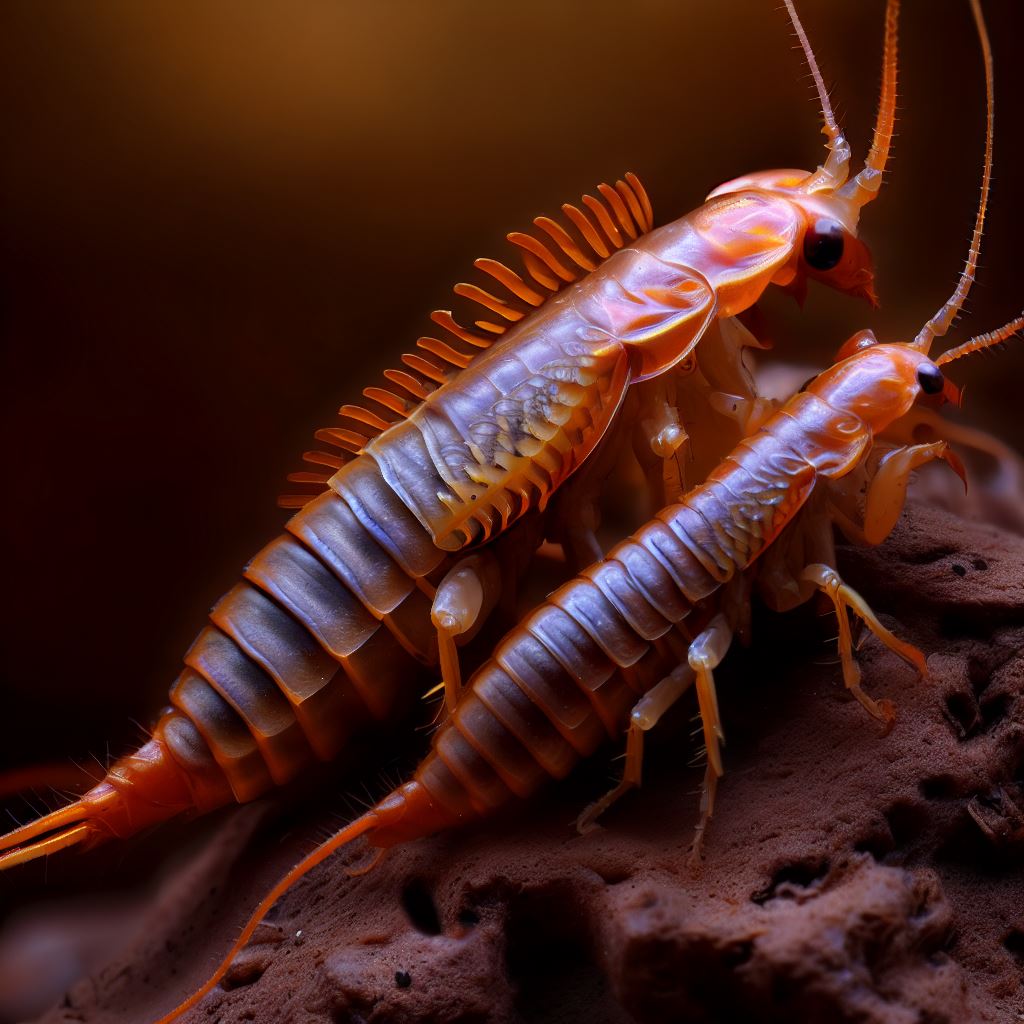
| Earwigs | |
|---|---|
| Feature | Description |
| Size | Typically range from 5 to 50 mm in length, depending on the species. |
| Color | Most are brown, though some species can be black or reddish-brown. |
| Pincers (Forceps) | Distinctive feature at the end of their abdomen, used for defense, capturing prey, and mating. |
| Antennae | Segmented and thread-like, used for sensing their environment. |
| Diet | Varied diet including plant material, decaying organic matter, and other insects. |
| Habitat | Found in cool, damp places. Commonly located under rocks, logs, or in mulch. |
| Lifecycle | Undergoes incomplete metamorphosis: Egg, Nymph (several stages), and Adult. |
| Wings | While many species have wings, not all earwigs are good fliers. Some species are wingless. |
Dissecting earwigs Anatomy
Forceps (Pincers):
One of the most distinguishing features of earwigs is the set of forceps or pincers at the end of their abdomen. These are used for defense, capturing prey, mating, and even grooming. The shape and size of the forceps can vary between male and female earwigs.
Antennae:
Earwigs have a set of long, segmented, and thread-like antennae that are crucial for sensing their environment. They contain numerous sensory receptors that help the earwig detect chemicals, touch, and even temperature.
Head:
The head of an earwig contains a pair of compound eyes, though they do not have ocelli (simple eyes) like some other insects. The mouthparts are of a chewing type, equipped to handle a variety of foods from plant material to other insects.
Thorax:
The thorax is where the legs and wings (if present) attach. While many species of earwigs have wings, not all are capable of flight. Those that can fly have two pairs of wings – a hard, protective set on top (tegmina) and a more delicate set underneath.
Abdomen:
The elongated abdomen houses important internal organs, including the reproductive system. In females, the abdomen can sometimes be seen carrying eggs or nymphs. The most notable external feature of the abdomen, of course, is the set of forceps.
Legs:
Earwigs have six legs, divided into typical insect segments: coxa, trochanter, femur, tibia, and tarsus. These legs are quite robust, adapted for digging, climbing, and quick movement.
Wings:
As mentioned, while many earwigs possess wings, not all use them for flight. The hindwings are membranous and fan-folded beneath the short, leathery forewings. When spread for flight, the hindwings are much larger than the protective forewings.
Body Coloration:
Earwigs typically exhibit cryptic coloration, meaning they are colored to blend in with their surroundings, usually in browns and blacks. This helps them stay hidden from predators and also aids in ambushing prey.
Reproductive Structures:
Female earwigs have a special chamber for storing sperm after mating, and the structure of the forceps in males is often used during the mating process.
What are the most common types of earwigs in Canada?
- European Earwig (Forficula auricularia)
- Shore Earwig (Labidura riparia)
- Ring-Legged Earwig (Euborellia annulipes)
- Seaside Earwig (Anisolabis maritima)
- Lesser Earwig (Labia minor)
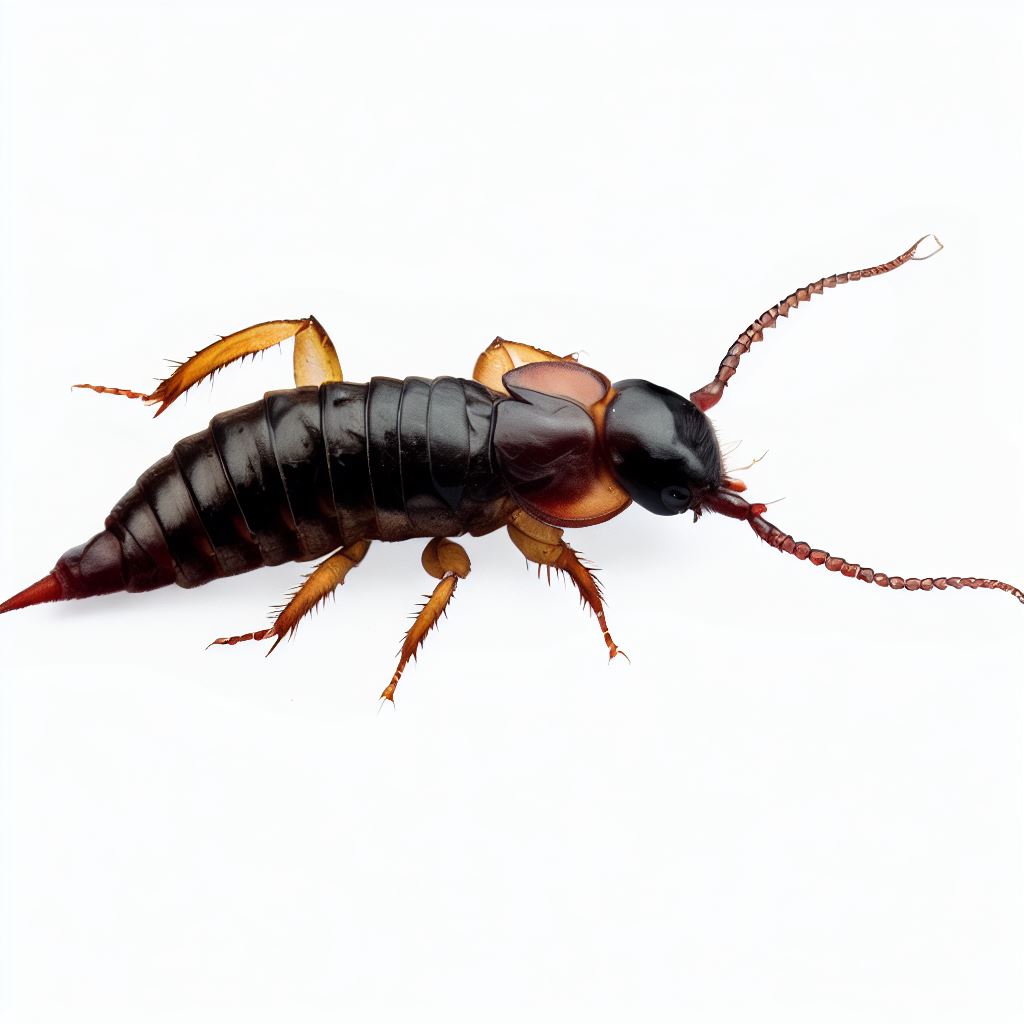
European Earwig
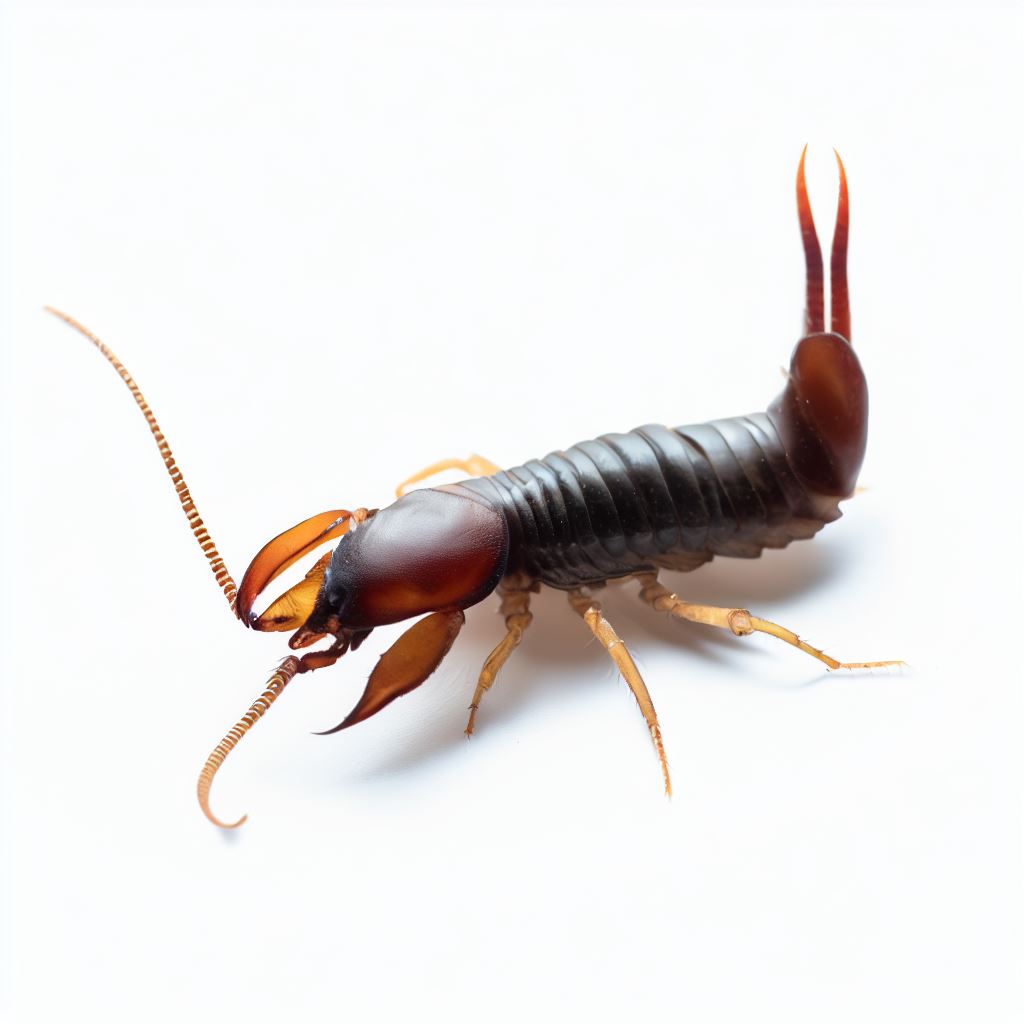
Shore Earwig
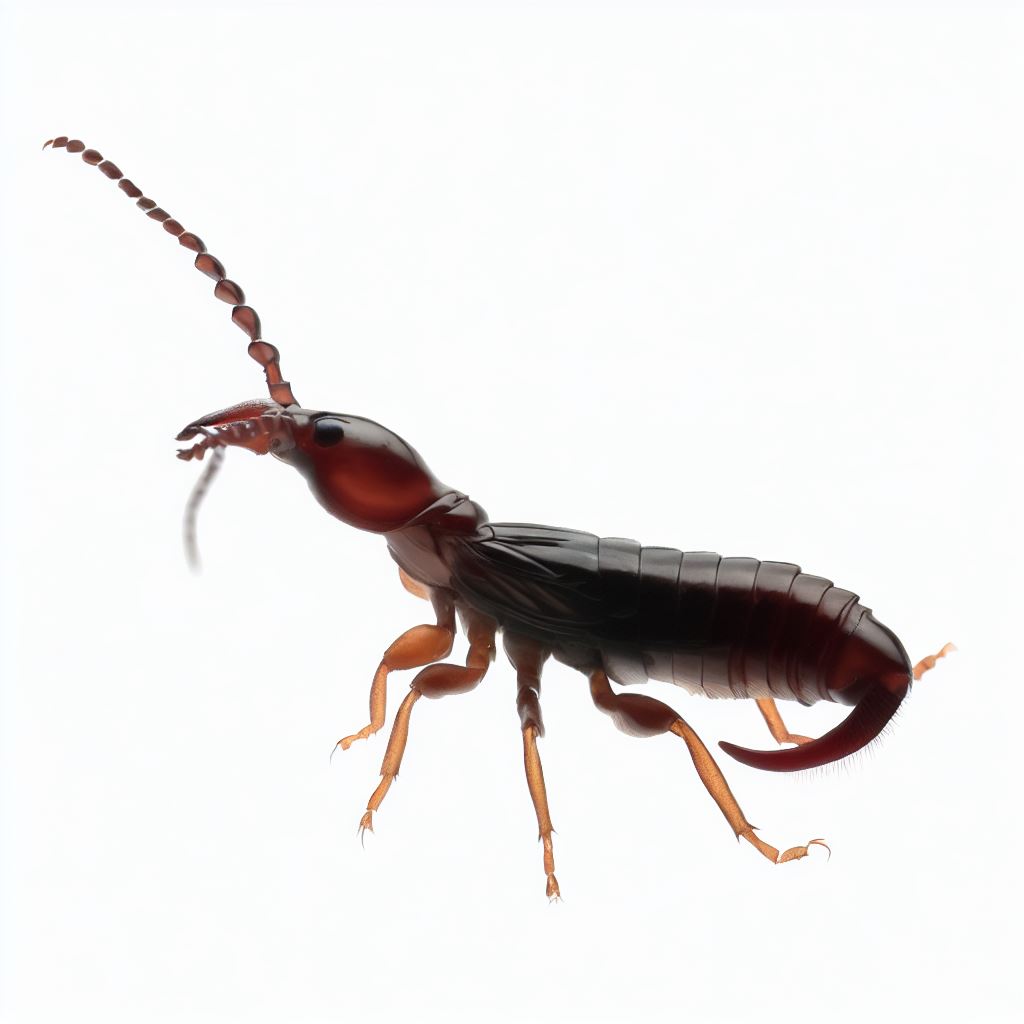
Ring-Legged Earwig
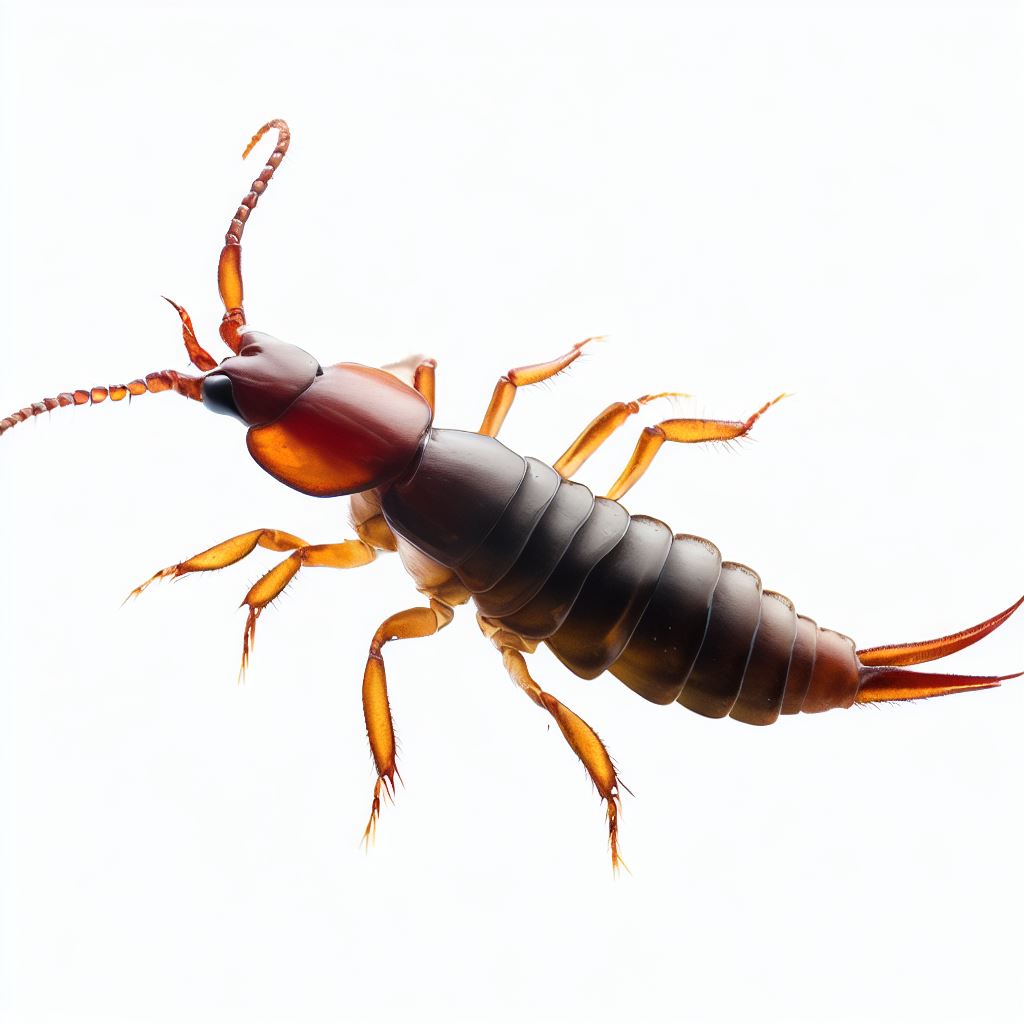
Seaside Earwig
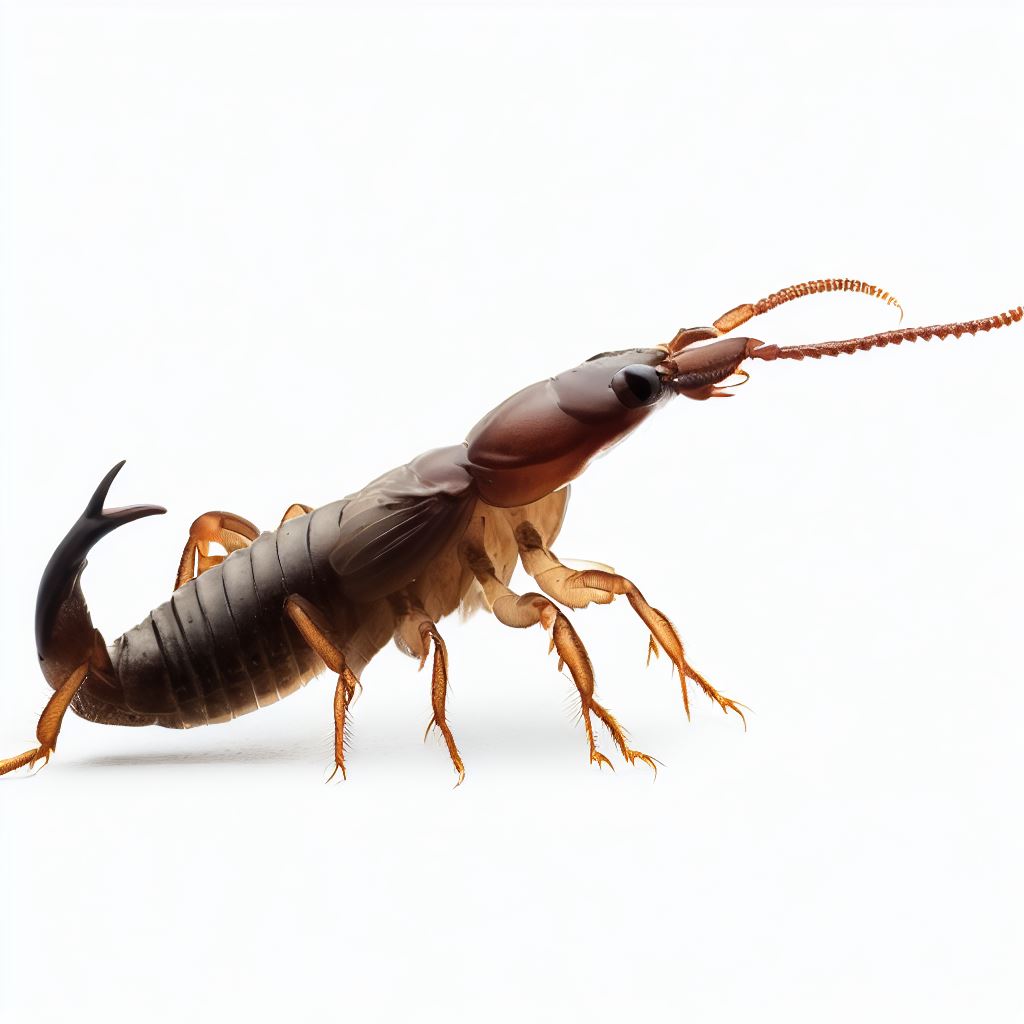
Lesser Earwig
Call us for a Free earwig Inspection
What are the characteristics of European Earwig?
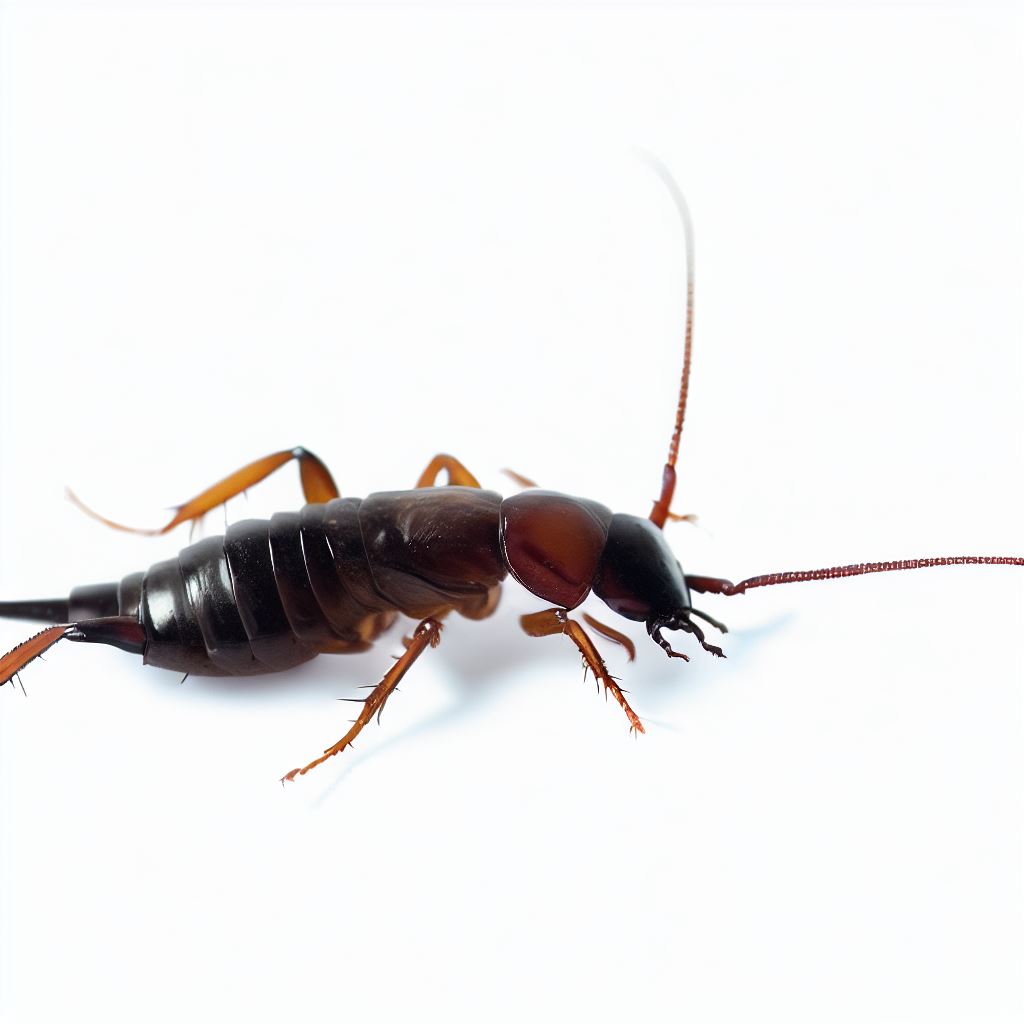
| Characteristics of European Earwig | |
|---|---|
| Feature | Description |
| Size | Typically 12 to 15 mm in length. |
| Color | Reddish-brown. |
| Antennae | Comprises 10 to 14 segments, used for sensing the environment. |
| Forceps (Pincers) | Prominent and curved, more curved in males than in females. |
| Habitat | Found in cool, damp places such as under rocks, logs, and in mulch. |
What are the characteristics of Shore Earwig?
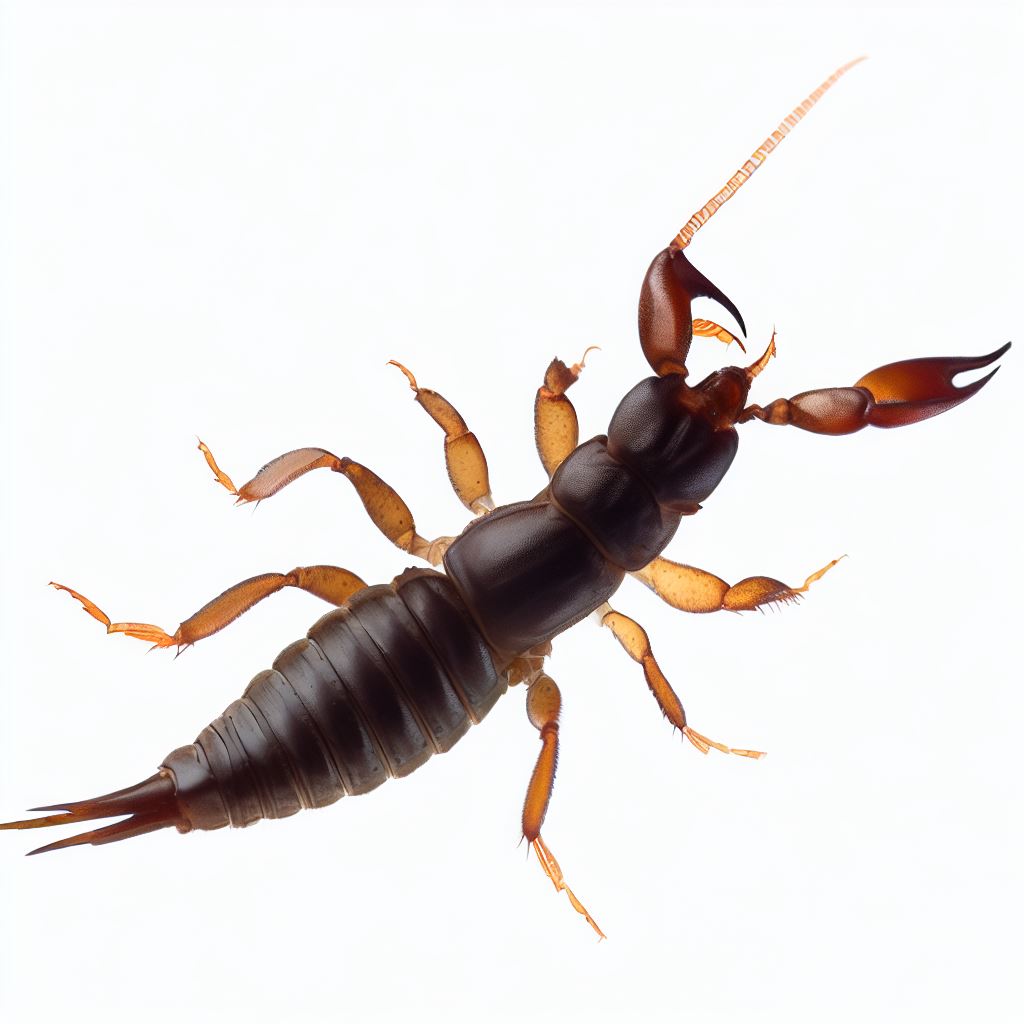
| Characteristics of European Earwig | |
|---|---|
| Feature | Description |
| Size | Typically 12 to 15 mm in length. |
| Color | Reddish-brown. |
| Antennae | Comprises 10 to 14 segments, used for sensing the environment. |
| Forceps (Pincers) | Prominent and curved, more curved in males than in females. |
| Habitat | Found in cool, damp places such as under rocks, logs, and in mulch. |
What are the characteristics of Ring-Legged Earwig ?
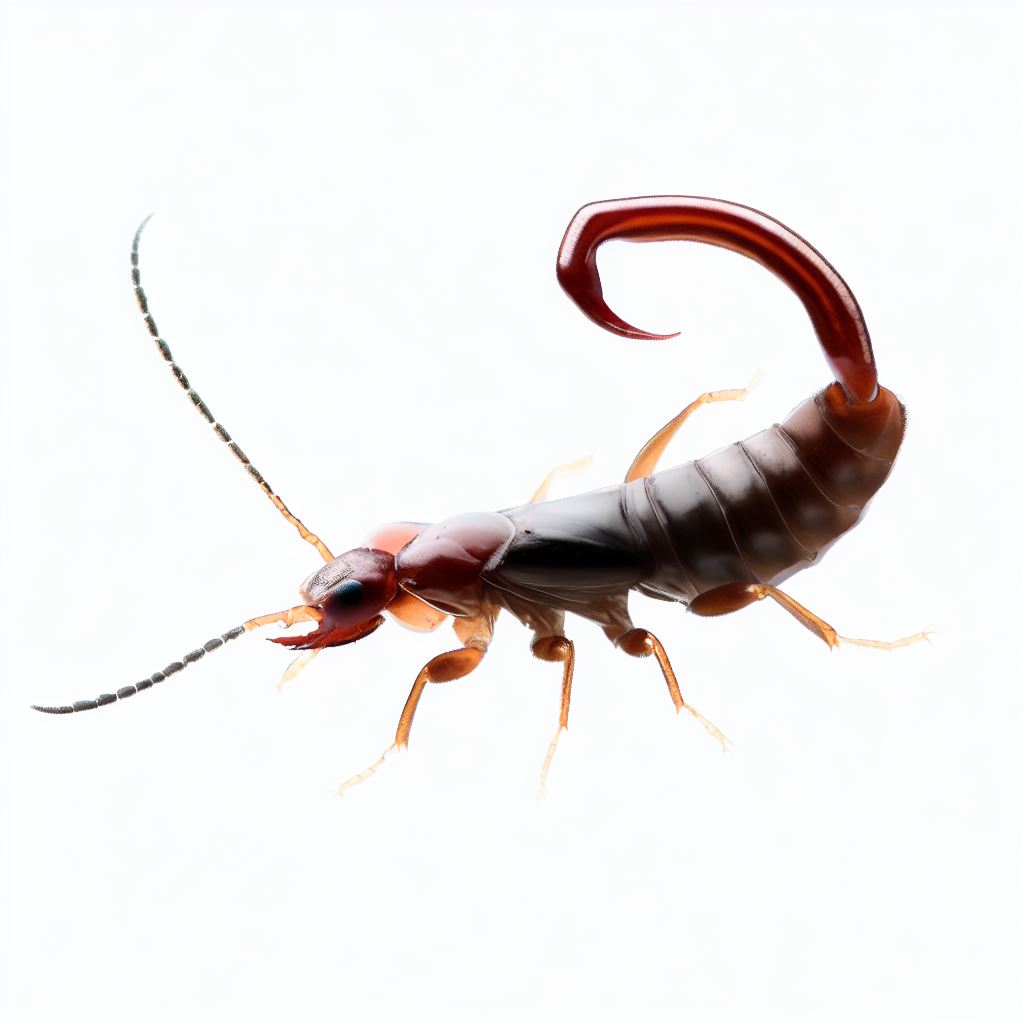
| Characteristics of Ring-Legged Earwig | |
|---|---|
| Feature | Description |
| Size | Adults generally measure between 10 to 16 mm in length. |
| Color | Dark brown to black, but most distinctively, they have pale bands (or rings) on the legs, giving them their name. |
| Antennae | Composed of 14 segments, moderately long, and used for sensory purposes. |
| Forceps (Pincers) | Curved in males but straighter in females. They use these forceps for defense, capturing prey, and mating. |
| Habitat | Often found in damp areas, under mulch, stones, logs, and other debris. They prefer dark, moist environments and are nocturnal in nature. |
What are the characteristics of Seaside Earwig?

| Characteristics of Seaside Earwig | |
|---|---|
| Feature | Description |
| Size | Adults typically measure between 25 to 30 mm in length, making it one of the larger species of earwigs. |
| Color | Generally a dark brown or reddish-brown color. |
| Antennae | Composed of around 20 segments; these are moderately long and serve as sensory organs. |
| Forceps (Pincers) | Impressive and powerful, especially in males. Used for defense, hunting, and during mating displays. |
| Habitat | True to its name, the Seaside Earwig can be found in coastal regions. They prefer sandy habitats, often hiding under driftwood or seaweed. |
What Are The Characteristics Of Lesser Earwig?
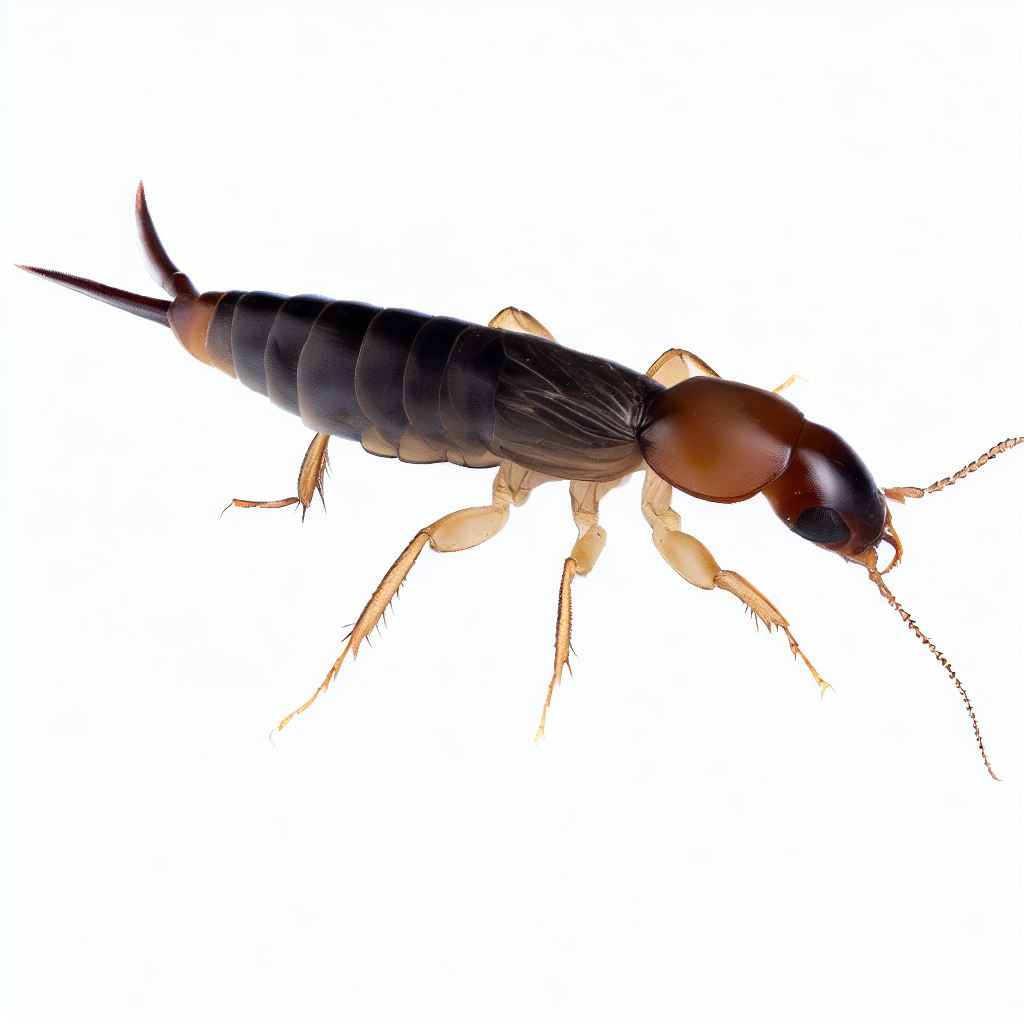
| Characteristics of Lesser Earwig | |
|---|---|
| Feature | Description |
| Size | Adults typically measure between 6 to 10 mm in length. |
| Color | Brownish to dark brown, often with a slightly reddish hue. |
| Antennae | Composed of 13 to 15 segments; relatively short compared to other earwig species. |
| Forceps (Pincers) | Relatively small and straight, without a strong curvature. They serve for hunting, defense, and mating. |
| Habitat | Found in various habitats including gardens, woodlands, and inside human dwellings. They prefer damp and dark places and often hide under rocks, logs, or leaf litter. |
Call us for a Free Earwig Inspection
Top Tips To Prevent Earwigs Infestations: Essential Guide
1. Reduce Moisture:
– Earwigs are attracted to damp areas. Ensure good drainage around your home and fix any leaky pipes or faucets. Utilize dehumidifiers in particularly humid parts of your home.
2. Seal Entry Points:
– Regularly inspect the perimeter of your home for cracks, gaps, or holes. Seal these using caulk or weather stripping to prevent earwigs from entering.
3. Declutter:
– Earwigs love hiding in garden debris, piles of leaves, or unused equipment. Regularly clean and declutter your yard. Store firewood away from the house and elevate it off the ground.
4. Use Diatomaceous Earth:
– This is a natural insect killer and can be sprinkled around the perimeter of your home. It causes dehydration in earwigs and kills them.
5. Maintain Your Garden:
– Regularly prune bushes and shrubs near the house. Avoid over-mulching or overwatering, and ensure plants are spaced out to allow air circulation.
Frequently Asked Questions about Earwigs
Contrary to popular myth, earwigs are not drawn to human ears. The name “earwig” originates from an old European superstition that these insects enter the ears of sleeping people. In reality, an earwig is more likely to be found in damp, concealed places than in a human ear.
Earwigs are not poisonous and they do not transmit diseases. While they do have pincers (or forceps) at the end of their abdomen, they are not typically aggressive towards humans. If handled or threatened, they might use their pincers, but the pinch is usually mild and not medically significant.
Earwigs are omnivorous, which means they eat both plant and animal materials. They typically feed on decaying organic matter, other insects, and plant materials such as leaves, fruits, and flowers. In gardens, they can be both beneficial (eating other pests) and harmful (damaging plants).
